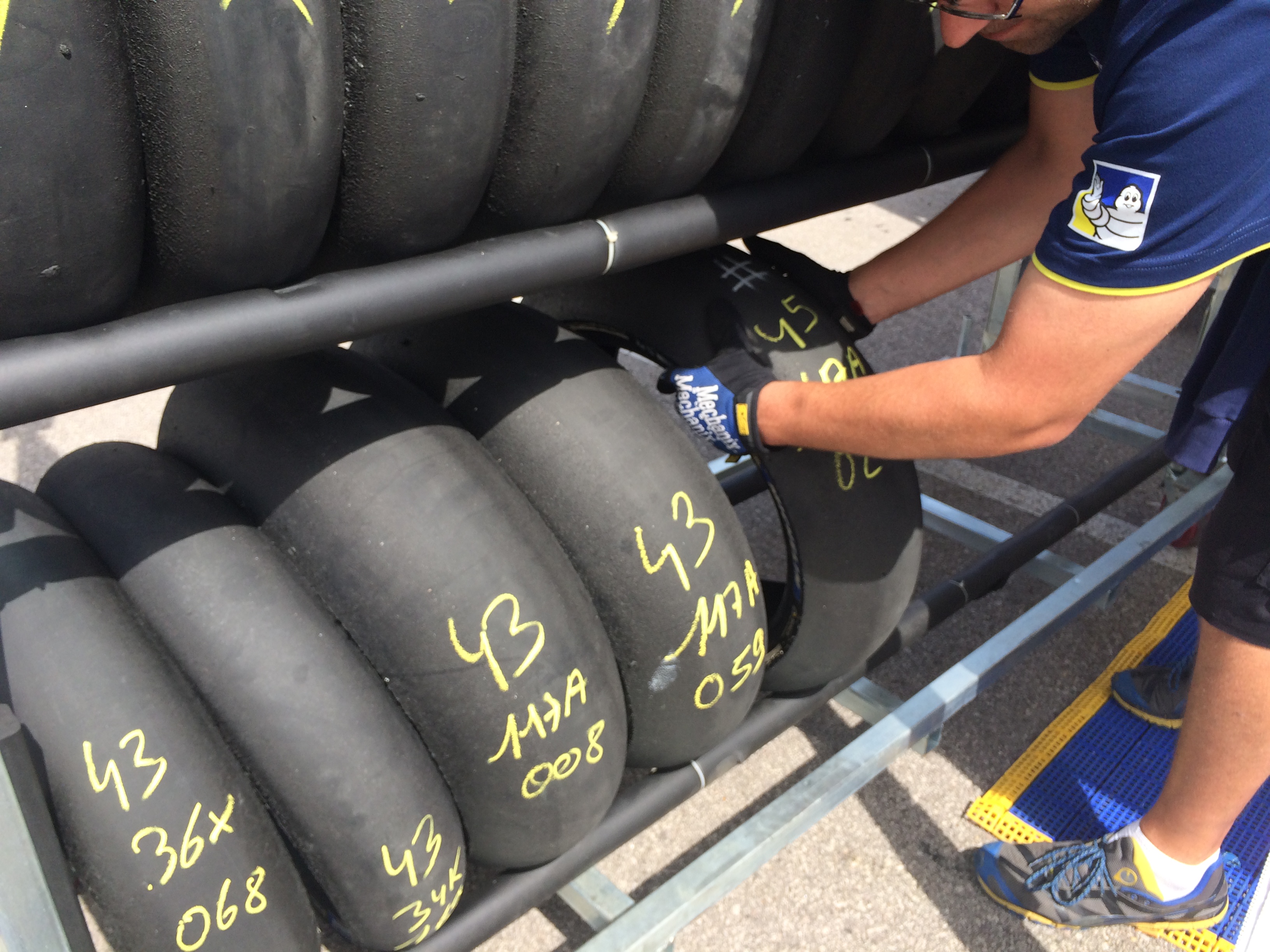AUSTIN — Lots of companies talk about how nimble they can be, but Michelin had to put speed to the test this week when it came to developing tires for the MotoGP motorcycle races here.
The rush came after one of the racers competing in Argentina last weekend shredded a rear tire. With only a week until the MotoGP World Championship race at the Circuit of the Americas in Austin on Sunday, Michelin decided the slicks it had made need to be withdrawn and a new tire was required for the race.
“For safety’s sake, we had to withdraw the (rear) tires. It was the most sensible thing to do. We couldn’t just say, ‘On you go, hurry up racing,’ because that’s irresponsible and our first priority is the rider’s safety,” says Tim Walpole, spokesperson for Michelin MotoGP.
The French tire maker had to develop a brand new compound and produce the new tires within three days — shipping the first batch from France to Austin on Wednesday, without testing. The racers, essentially, had to test the new tire during practices and races.
“We know it’s good enough and the riders have trusted us that we’re doing the right thing and they have gone out and used it very competitively and very aggressively,” Walpole says.
The damaged tires have been shipped back to Europe for testing and data analysis. “Everything each week, each fortnight is changing as we are going forward,” Walpole says.
What might be surprising to amateur racers and street riders is that there are no new technologies in the current MotoGP race tires that commercial tires don’t have. This is largely because this is Michelin’s first year as MotoGP’s official tire supplier, taking over from Bridgestone, which has served as supplier since 2009.
“We had to make the most of what was available in the house, and it was difficult enough to tune the tires with what we knew … to fit these (racers’) needs,” says Nicolas Goubert, technical director and head of the Michelin MotoGP group. “Of course we did a lot of new profiles, we adjusted the compound and construction, but it was nothing revolutionary.”
So far this weekend, the new rear tires have held up well, but Michelin says it will continue to gather rider feedback and continue to work on enhancing the product.
“We are learning. We are not going to stop either. If we suddenly get to a tire that we think that’s great, we’re not going to stop. ... We will be evolving,” Walpole says.


![used motorcycle race tires [image : 82844370]](http://www.gannett-cdn.com/media/2016/04/09/USATODAY/USATODAY/635958205338123033-IMG-9630.JPG)
![Redding Austin GP [image : 82844366]](http://www.gannett-cdn.com/media/2016/04/09/USATODAY/USATODAY/635958205161217899-AP-AUSTIN-GP-MOTORCYCLE-RACING-81089030.JPG)
![rain and slicks [image : 82844368]](http://www.gannett-cdn.com/-mm-/0f4649e901774c4b92a355f5828db1043165a333/c=266-0-3130-2448/local/-/media/2016/04/09/USATODAY/USATODAY/635958205258874525-IMG-9631.JPG)
